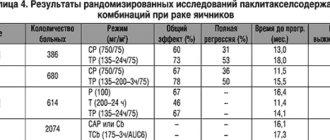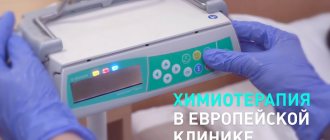Vancomycin powder for solution for infusion, 1000 mg bottle
Registration Certificate Holder
SPC ELF (Russia)
Dosage form
Medicine - Vancomycin Elfa
Description
Powder for solution for infusion
white or white with a pinkish or yellowish or brownish tint.
1 fl.
vancomycin (hydrochloride form) 1000 mg
20 ml - bottles (1) - cardboard packs. 20 ml - bottles (10) - cardboard boxes (for hospitals). 20 ml - bottles (50) - cardboard boxes (for hospitals).
Indications
Severe infectious and inflammatory diseases caused by pathogens sensitive to vancomycin (with intolerance or ineffectiveness of therapy with other antibiotics, including penicillins or cephalosporins): sepsis, endocarditis (as monotherapy or as part of combination antibiotic therapy), pneumonia, lung abscess, meningitis, bone infections and joints, skin and soft tissue infections. Pseudomembranous colitis caused by Clostridium difficile.
Contraindications for use
Acoustic neuritis, severe renal dysfunction, first trimester of pregnancy, lactation (breastfeeding), increased sensitivity to vancomycin.
pharmachologic effect
Antibiotic of the glycopeptide group. Has a bactericidal effect. It disrupts the synthesis of the cell wall, the permeability of the cytoplasmic membrane and the synthesis of bacterial RNA. Active against gram-positive bacteria: Staphylococcus spp. (including penicillinase-producing and methicillin-resistant strains), Streptococcus spp., Enterococcus spp., Corynebacterium spp., Listeria spp., Actinomyces spp., Clostridium spp. (including Clostridium difficile).
No cross-resistance with antibiotics of other groups was observed.
Drug interactions
The simultaneous use of vancomycin and local anesthetics can lead to the development of erythema, histamine-like flushes and anaphylactic shock.
With the simultaneous use of vancomycin with aminoglycosides, amphotericin B, cisplatin, cyclosporine, furosemide, polymyxins, an increase in oto- and nephrotoxic effects is observed.
Dosage regimen
Administered intravenously. Adults: 500 mg every 6 hours or 1 g every 12 hours. To avoid collaptoid reactions, the infusion duration should be at least 60 minutes. Children - 40 mg/kg/day, each dose should be administered over at least 60 minutes. In patients with impaired renal excretory function, the dose is reduced taking into account the CC values.
Depending on the etiology of the disease, vancomycin can be taken orally. For adults, the daily dose is 0.5-2 g in 3-4 divided doses, for children - 40 mg/kg in 3-4 divided doses.
Maximum daily dose
for adults with intravenous administration it is 3-4 g.
Side effect
From the cardiovascular system:
cardiac arrest, hot flashes, decreased blood pressure, shock (these symptoms are mainly associated with rapid infusion of the drug).
From the hematopoietic system:
neutropenia, eosinophilia, thrombocytopenia, agranulocytosis.
From the digestive system:
nausea.
From the urinary system:
interstitial nephritis, changes in renal function tests, renal dysfunction.
From
the senses:
vertigo, tinnitus, ototoxic effects.
Dermatological reactions:
exfoliative dermatitis, benign blistering dermatosis, pruritic dermatosis, rash.
Allergic reactions:
urticaria, Stevens-Johnson syndrome, toxic epidermal necrolysis, vasculitis. Anaphylactoid reactions may occur during or shortly after a too-rapid infusion of vancomycin.
Other:
chills, drug fever, tissue necrosis at injection sites, pain at injection sites, thrombophlebitis. With rapid intravenous administration, the development of “red neck syndrome” associated with the release of histamine is possible: erythema, skin rash, redness of the face, neck, upper body, arms, rapid heartbeat, nausea, vomiting, chills, fever, fainting.
special instructions
Use with caution in mild to moderate renal dysfunction, hearing impairment (including a history), in the second and third trimesters of pregnancy. During the treatment period, patients with kidney disease and/or damage to the VIII pair of cranial nerves must be monitored for renal function and hearing.
IM administration of vancomycin is not allowed due to the high risk of tissue necrosis.
When used in newborns or elderly patients, it is necessary to monitor the concentration of vancomycin in the blood plasma.
Use during pregnancy and breastfeeding
Restrictions during pregnancy - Contraindicated. Restrictions when breastfeeding - Contraindicated.
Use in the first trimester of pregnancy is contraindicated due to the risk of nephro- and ototoxicity. The use of vancomycin in the second and third trimesters is possible only for health reasons.
If use is necessary during lactation, breastfeeding should be discontinued.
Use for renal impairment
Restrictions for impaired renal function - Contraindicated.
Contraindicated in cases of severe renal impairment.
Use with caution in mild to moderate renal impairment.
Use in elderly patients
Restrictions for elderly patients - Use with caution.
When used in elderly patients, it is necessary to monitor the concentration of vancomycin in the blood plasma.
Use in children
Restrictions for children - With caution.
When used in newborns, it is necessary to monitor the concentration of vancomycin in the blood plasma.
Vancomycin
Vancomycin is not intended for intramuscular or bolus injections.
It is used intravenously by infusion or orally.
When administering vancomycin intravenously, the recommended concentration is no more than 5 mg/ml and the rate of administration is no more than 10 mg/min.
Adults and children over 12 years of age with normal kidney function
the drug should be administered intravenously at 2000 mg per day (500 mg every 6 hours or 1000 mg every 12 hours). Each dose should be administered at a rate of no more than 10 mg/min and over a period of at least 60 minutes. The maximum single dose is 1000 mg, the maximum daily dose is 2000 mg.
Children from 1 month to 12 years
the drug should be administered intravenously at 10 mg/kg every 6 hours. Each dose should be administered over at least 60 minutes.
For newborns
The initial dose is 15 mg/kg, then 10 mg/kg every 12 hours during the first week of life. Starting from the second week of life - every 8 hours until the age of one month. Each dose should be administered over at least 60 minutes. When prescribing to newborns, monitoring the concentration of vancomycin in the blood plasma is desirable. The maximum single dose for newborns is 15 mg/kg body weight; the daily dose for a child should not be higher than the daily dose for an adult (2000 mg).
Obese patients
the drug is prescribed in usual doses.
Patients with impaired renal function
it is necessary to individually select the dose. Serum creatinine clearance (CK) can be used to guide vancomycin dosing in this group of patients.
Correction can be carried out by increasing the intervals between administrations, or reducing the single dose of the drug.
Vancomycin dose table for patients with impaired renal function
| Creatinine clearance (ml/min) | Vancomycin dose mg/24 h |
| 100 | 1545 |
| 90 | 1390 |
| 80 | 1235 |
| 70 | 1080 |
| 60 | 925 |
| 50 | 770 |
| 40 | 620 |
| 30 | 465 |
| 20 | 310 |
| 10 | 155 |
This table cannot be used to determine the dose of the drug for anuria. Such patients should be given an initial dose of 15 mg/kg body weight to rapidly achieve therapeutic serum concentrations of the drug. The dose required to maintain a stable concentration of the drug is 1.9 mg/kg/24 hours. For anuria, it is recommended to administer 1000 mg every 7-10 days.
Correction by increasing the intervals between injections
| Creatinine clearance (CC) (ml/min) | Vancomycin dose | Interval between doses |
| >80 | 500 mg or 1000 mg | 12 h |
| 80-50 | 1000 mg | 24 hours |
| 50-10 | 1000 mg | 3-7 days |
| <10 (anuria) | 1000 mg | 7-14 days |
In premature infants and elderly patients
As a result of reduced renal function, a significant dose reduction may be required. Vancomycin plasma concentrations should be regularly monitored.
Patients with severe renal failure
It is advisable to administer maintenance doses of 250-1000 mg once every few days: for creatinine clearance 10-50 ml/min - 1000 mg every 3-7 days, for creatinine clearance <10 ml/min - 1000 mg every 7-14 days. For anuria, a dose of 1000 mg every 7-10 days is recommended.
When only the serum creatinine concentration (CK) is known, the formula below can be used to calculate creatinine clearance:
For men
: body weight, kg x (140 - age (years) / [72 x CK in blood serum, mg/100 ml]
For women
: the result obtained is multiplied by 0.85.
Hemodialysis patients:
the initial dose (when using a high-flux membrane) is 20-25 mcg/kg. Maintenance doses should be administered based on the residual drug concentration in the blood plasma (the dose is adjusted to maintain a residual drug concentration of approximately 15-20 mcg/ml). Vancomycin is effectively removed by hemodialysis using high-flux membranes (such as polysulfone). When using membranes with normal permeability (low-flux membranes), vancomycin is poorly excreted.
Patients with liver failure
no dose adjustment required.
Perioperative prevention of bacterial endocarditis in all age groups:
The recommended dose is an initial dose of 15 mg/kg before anesthesia. Depending on the length of the surgery, a second dose of vancomycin may be required.
Duration of therapy:
The duration of treatment depends on the type and severity of infection and individual clinical response. The recommended duration of therapy is presented in the table below:
| Indication | Duration of therapy |
| Complicated skin and soft tissue infections | |
| - without necrosis | From 7 to 14 days |
| - necrotizing | 4 to 6 weeks* |
| Bone and joint infections | From 4 to 6 weeks** |
| Community-acquired pneumonia | From 7 to 14 days |
| Nosocomial pneumonia, including ventilator-associated pneumonia | From 7 to 14 days |
| Infective endocarditis | From 4 to 6 weeks*** |
* Continue administration until the need for wound debridement has passed, until the patient's condition has clinically improved and there has been no fever for 48-72 hours.
**Longer courses of treatment with an oral drug should be considered for the treatment of prosthetic joint infections.
*** The duration and need for combination therapy depends on the type of valve and microorganism.
Preparation of solution for infusion
The solution is prepared by adding 10 ml of water for injection to 500 mg and 20 ml to 1000 mg to obtain a concentration of 50 mg/ml. Before use, the drug solution is diluted in at least 100 ml (solutions containing 500 mg of vancomycin) or 200 ml (solutions containing 1000 mg of vancomycin) of 5% dextrose solution or 0.9% sodium chloride solution. Before injection, the prepared solution for parenteral administration should be checked visually for the presence of mechanical impurities and color changes.
The concentration of vancomycin in the prepared solutions should not exceed 5 mg/ml.
Stability of solutions
Solutions prepared on the basis of a 5% dextrose (glucose) solution or a 0.9% sodium chloride solution can be stored at room temperature (not higher than 25 ° C) for 24 hours, or in the refrigerator at a temperature of 2 to 8 ° C in within 14 days.
From a microbiological point of view, drug solutions should be used immediately after preparation, except in cases where the preparation was carried out under controlled aseptic conditions. If the drug solutions are not used immediately after preparation, the conditions and duration of their storage are the responsibility of the user and should not exceed the periods indicated above.
Preparation of a solution for oral administration
Vancomycin can be used orally to treat pseudomembranous colitis caused by Clostridium difficile
due to the use of antibiotics, as well as for the treatment of staphylococcal enterocolitis. Intravenous administration of the drug has no advantages for the treatment of these diseases.
The drug should be used in the following doses: adults 500-2000 mg 3-4 times a day, children 40 mg/kg 3-4 times a day. The total daily dose should not exceed 2000 mg. The appropriate dose is prepared in 30 ml of water and given to the patient to drink or administered through a tube. To improve the taste of the solution, you can add regular food syrups to it. Duration of treatment is from 7 to 10 days.
Vancomycin is not effective when taken by mouth for other types of infections.


